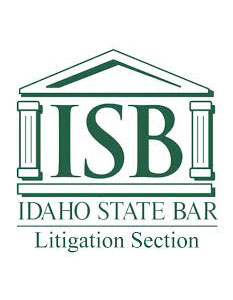When an unexpected slip and fall incident occurs, it can be both physically and emotionally taxing. In the state of Idaho, understanding how to preserve evidence after such an event is paramount for ensuring that one’s rights are protected. This comprehensive guide elucidates the steps and considerations necessary for preserving evidence effectively.
Understanding the Importance of Evidence Preservation
The foundation of any successful slip and fall claim lies in the strength of the evidence presented. In Idaho, like many other jurisdictions, the burden of proof rests on the plaintiff. This means that the injured party must demonstrate that the property owner or manager was negligent, leading to hazardous conditions that caused the accident. By meticulously preserving evidence, victims can bolster their claims, paving the way for fair compensation.
Immediate Actions Post-Incident
Time is of the essence following a slip and fall accident. Immediate actions can significantly influence the trajectory of a potential legal claim. Firstly, it’s crucial to seek medical attention, not only for health reasons but also to document injuries. Medical records serve as vital evidence, detailing the extent and nature of injuries sustained.
Simultaneously, documenting the scene is imperative. This includes taking photographs or videos of the exact location where the fall occurred, highlighting any hazardous conditions such as wet floors, uneven surfaces, or poor lighting. Capturing multiple angles provides a comprehensive view, leaving little room for ambiguity.
Additionally, gathering contact information of any witnesses present can prove invaluable. Their firsthand accounts can corroborate the victim’s narrative, adding weight to the claim. Ensuring that these witnesses provide statements promptly can prevent memories from fading, preserving the integrity of their testimonies.
Preserving Physical Evidence
Physical evidence plays a pivotal role in substantiating a slip and fall claim. Items like the clothing and footwear worn during the incident should be retained in their post-accident state. This means refraining from washing or altering them in any manner. These items might contain traces of substances from the accident scene, such as liquids or debris, which can attest to the hazardous conditions present.
Moreover, any objects involved in the fall, like broken steps or defective equipment, should be documented and, if possible, secured. If the property owner attempts to rectify the hazardous condition post-incident, having evidence of its prior state can be instrumental in establishing negligence.
Securing Surveillance Footage
In many establishments, surveillance cameras monitor premises continuously. Such footage can provide an unbiased account of the events leading up to, during, and after the slip and fall. However, it’s essential to act swiftly, as many surveillance systems overwrite data after a certain period, often within days or weeks.
To secure this footage, formal requests should be made to the property owner or manager promptly. Drafting a preservation letter, which is a formal document requesting the retention of specific evidence, can be an effective strategy. This letter should detail the date, time, and location of the incident, emphasizing the importance of the footage for legal proceedings.
Documenting Communication with Property Owners
All interactions with the property owner, manager, or their representatives should be meticulously documented. This includes verbal conversations, emails, letters, and any other forms of communication. Such records can provide insights into the property owner’s knowledge of the hazardous condition and their response post-incident.
It’s advisable to report the incident to the property owner or manager as soon as possible. Filing an official incident report creates a formal record, which can be referenced in future legal proceedings. Ensuring that a copy of this report is obtained and safely stored is equally important.
Maintaining a Personal Injury Journal
Beyond tangible evidence, personal accounts of the aftermath can be compelling. Maintaining a journal detailing pain levels, emotional distress, medical appointments, and daily limitations can provide a comprehensive view of the injury’s impact. Such narratives humanize the claim, offering insights beyond medical records and photographs.
Regular entries, preferably daily, can track recovery progression, setbacks, and any other relevant observations. Over time, this journal becomes a chronicle of the injury’s toll, both physically and emotionally.
Engaging Medical Professionals
Consistent medical evaluations and treatments not only aid in recovery but also serve as continuous evidence of the injury’s severity. Attending all medical appointments, following prescribed treatments, and retaining all medical records fortify the claim’s validity.
Furthermore, medical professionals can provide testimonies, elucidating the direct correlation between the slip and fall incident and the injuries sustained. Their assessments can counter any claims suggesting pre-existing conditions or alternative causes for the injuries.
Understanding Idaho’s Comparative Negligence Law
In Idaho, the doctrine of comparative negligence is employed. This means that if the plaintiff is found to be partially at fault for the incident, their compensation can be reduced proportionally. For instance, if deemed 20% at fault, the awarded compensation diminishes by that percentage.
Therefore, preserving evidence that absolves or minimizes the plaintiff’s negligence is crucial. Demonstrating that the hazardous condition was unforeseeable or that adequate warning signs were absent can counter arguments suggesting plaintiff negligence.
Rules of a Personal Injury Claim Choosing a Personal Injury AttorneyRelated Videos
The Role of Legal Counsel in Evidence Preservation
Navigating the intricacies of evidence preservation can be daunting. Engaging seasoned legal counsel can streamline this process, ensuring that all pertinent evidence is identified, secured, and presented effectively. Attorneys possess the acumen to draft preservation letters, liaise with property owners, and advise on best practices for documentation.
Moreover, legal professionals can guide victims through the labyrinth of legal procedures, ensuring compliance with Idaho’s statutes of limitations and other regulatory mandates. Their experience can be the linchpin in transforming a challenging situation into a favorable outcome.
Verdicts & Settlements
Preserving evidence in an Idaho slip and fall case is a multifaceted endeavor, demanding prompt action, meticulous documentation, and strategic planning. By adhering to the guidelines elucidated above, victims can fortify their claims, ensuring that their rights are upheld and that they receive the compensation they rightfully deserve.
If you or a loved one has experienced a slip and fall incident, understanding and navigating the legal landscape can be overwhelming. At Hepworth Holzer, LLP, we are committed to championing your rights, providing unwavering support, and guiding you every step of the way. Reach out to us today, and let us help you secure the justice you deserve.










